1 Chapter 1: A Critical Lens on Education: What is it all about?
Dr. Della Perez
Introduction
When you think of the term “education,” what comes to mind? For some people, the term may bring to mind the different facets that make up the educational system. Others might think of a favorite teacher. Still others might of a the schools they attended. This chapter will explore many of these ideas and more. To being, we will look at educational systems in the United States. After which, we will talk about what it means to be a teacher. Specific information about how the College of Education at Kansas State University views education will also be provided. The chapter will conclude with survey that explores how you learn and how this might influence your future teaching practice. Even if you are not going into the teaching profession, this chapter will provide with you some important information about the education in the United States.
Section I: Educational Systems in the United States
1.1 Essential Questions
By the end of Section I, the following essential questions will be answered:
- What are the six most common types of school systems within the United States?
- Which school system is the most dominant in the United States?
- How do the school systems in Kansas align with those across the United States?
According to the National Center for Education Statistics (NCES, 2023), there are 128,961 public and private K-12 schools in the United States. Note: There are pre-kindergarten (Pre-K) programs provided across the country, however, they are not required and they vary by state. Elementary/primary schools are typically kindergarten through 5th grade (sometimes 6th grade). Middle schools typically serve sixth through eight grade. While junior high schools are typically seventh through eight grade, however, they may also include ninth grade. High school/secondary schools, can be ninth through twelfth grades.
1.2 A Closer Look

In this section, we will explore six of the most dominant types of public and private schools offered in the United States. Specific information about each system within the State of Kansas will also be shared. Even if you are not going to enter into the teaching profession, the information provided in this section will give you some valuable insights about educational systems in the United States.
Traditional Public Schools
The most common type of school system in the United States is the traditional public school. According to the NCES, there were 50.8 million students enrolled in public elementary and secondary schools across the United States in the fall of 2019 (NCES, 2023). Key characteristics of traditional public schools in the United States include:
- They are in every state.
- Instruction is provided at the primary and secondary level.
- Enrollment is free for all students.
- District school boards and local education agencies (LEAs) regulate public schools.
- Funding is provided by government and state tax dollars.
- They do not have any religious affiliation.
- The curriculum is determined by each school district within the state, but the curriculum has to follow specific regulations from the state.
1.3 A Closer Look
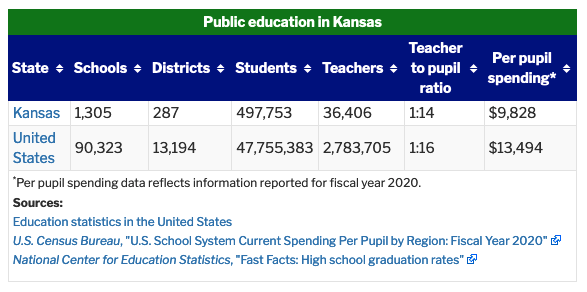
Charter Schools
Charter schools were created to provide students and parents with more options than provided by traditional public schools. The appeal of many charter schools is that they are specifically designed to meet students educational and emotional needs. Key characteristics of charter schools in the United States include:
- They can be found in all states but Montana, Nebraska, South Dakota and Vermont as of 2023.
- They are classified as public schools by the U.S. Department of Education.
- Instruction is provided at the primary and secondary level.
- Enrollment is free and anyone can apply.
- The curriculum is determined by a board, but the curriculum still has to follow specific regulations by each state that dictates rules and performance standards.
- Funding is provided by state tax dollars and independent fundraising.
- They do not have any religious affiliation.
- They have more flexibility when it comes to academic focus and discipline policies.
- Parent accountability play an important role.
- Admission is determined by a lottery system, which ensures smaller class sizes and more individualized student support.
The nine charter schools in Kansas are: Hugoton Learning Academy, Insight School of Kansas, Yoder Charter Elementary School, Walton Rural Life Center, Smoky Valley Virtual Charter School, Caney Valley Charter Academy, Lawrence Virtual School, Hope Street Charter Academy, and Service Valley Charter Academy.
1.4 Teacher Voices
When interviewed about Yoder Charter School, Becky King has the following to share:
- “The charter school’s mission is to really use project based learning,” said Becky King with the charter school. “Something that’s really unique about Yoder Charter School is that we’ve got combined grade levels. We’ve got teachers teaching multiple grade levels in a classroom and using projects allows them to teach a lot of different concepts through a wide range of levels……….The charter school is just a really great place for kids to be immersed in real life ways of using math that’s in the classroom.” (Gosnell, 2023).
Magnet Schools
Magnet schools are similar to charter schools in that they offer specialized programming. However, unlike charter schools, magnet schools seek to attract schools from multiple districts. According to a 2021 article by U.S. News & World Report, there are over 4,300 magnet schools in the United States (Lytle, 2021). Which is approximately 3.5 million children.
Key characteristics of magnet schools in the United States include:
- They are classified as public schools by the U.S. Department of Education.
- Instruction is provided at the primary and secondary level.
- Admission processes vary (i.e., lottery or other non-academic criteria), and about 25% use academic criteria for admission. If admitted, tuition is free.
- Magnet schools incorporate the following five core principles: diversity, innovative curriculum and professional development, academic excellence, high-quality instructional systems, and family/community partnerships.
- Funding is provided by state tax dollars and additional funding, which allows schools to pay teachers higher salaries.
- They tend to have smaller class sizes, better-equipped classrooms, and greater diversity.
In Kansas, there are 37 magnet public schools. One unique aspect about magnet schools in Kansas is that that minority student enrollment is 62% (dominantly Hispanic) vs. the public school average of 37% (dominantly Hispanic). There are many types of magnet schools with different focuses, from STEM to Dual-language programs.
1.5 An Example in Practice
The following video provides a close up look at the Scott Dual Language Magnet school in Topeka Kansas. As you watch the video, consider the following questions:
- What are the benefits of this magnet school?
- Would you feel comfortable sending your child to this type of school? Why or why not?
- Would you like to teach in this type of school? Why or why not?
Private Schools
According to NCES, in the fall of 2019 there were 4.7 million K-12 students enrolled in private schools across the United States. InKey characteristics of private schools in the United States include:
- They can be found in every state.
- Private schools rely on tuition fees and external funds coming from non-public sources like religious organizations, endowments, grants, and charitable donations.
- They are not held to the same accreditation requirements by each state board of education.
- Students have to pay in order to attend private schools.
- Class size and student to teacher ratios are often smaller in private school settings.
- They may have a religious affiliation.
- They may have different rules than public schools, for example, they often require uniforms.
- Higher performance rates on college entry exams like the SAT and ACT.
- Private school teachers may not have the same certification as public school teachers.
In 2023, there were 228 private schools in the state of Kansas. Approximately, 42,500 students in Kansas attend private schools. The size and grade-levels of each school vary. Although there are many religious based private schools (i.e., Baptist, Christian, Catholic, Lutheran, etc.), there are also private schools based on specific programming like Montessori schools.
1.6 A Closer Look
The following chart demonstrates that student achievement is higher in private schools in the State of Kansas than public schools. As you review the chart, consider the following questions:
- Based on the chart, do you think more students should attend private schools?
- Why do you think private schools so significantly outperform public schools in Kansas?
- What do you think are the main pros and cons of teaching in a public school?
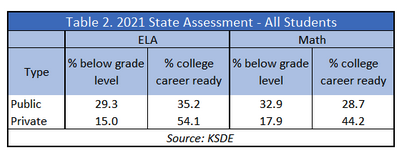
Homeschooling
In the Fall, 2022, there were 4.3 million homeschooled students across the United States (approximately 6.73% of all K-12 students). This number has increased by almost 500,000 since 2020 (due in large part to COVID). Key characteristics of homeschooling in the United States include:
- Students are taught by a tutor or parent in the home.
- About half the parents who homeschool their children have three or more children at home.
- Parents have to follow state’s guidelines and rules for homeschooling (USAHello, nd).
- Guidelines and rules can vary by state.
- There are lots of free resources for homeschooling that can often be found online, however, the average cost to homeschool a child is between $700 – $1,800 per year.
- All materials like books, computers, and school supplies are provided by the parents.
Within the State of Kansas, there were approximately 44,000 active, non-accredited, private schools. This number jumped by almost 10,000 since 2018. A large part of this increase was due to Covid, additional reasons Kansas parents have chosen to homeschool their children include: safety concerns, curriculum, regulations, and declining student achievement (Hicks, 2022).
1.7 A Closer Look
The following fact sheet from the Kansas State Department of Education provides more statistics and information about homeschooling within the United States and Kansas.

Take a moment to reflect on all the different systems of education presented in this section. Informally, rate each system according to your preference as a student. Then create a second list rating each system as a future teacher. Do your list match? Why are why not? What are the implications of this exercise for your future professional practice?
Section II: You want to be a teacher?!
1.8 Essential Questions
By the end of Section II, the following essential questions will be answered:
- What is involved in obtaining teaching licensure?
- How is the teaching profession viewed today vs. fifty years ago?
- What does it mean when people say teachers wear many hats?
When I ask students why they want to be a teacher, the most common response I get is: “I love kids!” Although it is very important to love kids, there is so much more involved in teaching. In this section, we will explore just a few of these elements. Starting with what it takes to get a teaching license. Then moving on to how the teaching profession is perceived. Finally, looking at the many hats teachers have to wear.
Teacher Licensure
In order to obtain a teaching license, you must complete an approved educator program at an accredited University. Successful completion typically results in a Bachelors degree. In addition, to become licensed, most states require to you to pass an exam like the Principles of Learning and Teaching (PLT) or the Praxis to demonstrate your mastery of teaching. There are also additional Praxis exams for areas of specialization like: Special Education, English as a Second Language, Math, Science, History, etc. Depending on the state in which you reside, a teaching license may also be referred to as a teaching certification. Sometimes teacher certification programs can be completed quicker than a more traditional teaching license. Due to teaching shortages across the country, alternative or non-traditional teacher certification is possible. Teacher who take this route have not completed all the coursework required to be fully licensed/certified teachers. The challenge presented with alternative or non-traditional routes is that the teachers in these positions lack specific training related to curriculum planning, classroom management, and other key areas of the educational system.
The following bullet points outline the in-state requirements for getting an initial teaching license in the State of Kansas:
- Bachelor’s degree from a regionally accredited college or university
- Completion of a state-approved teacher preparation program
- Recency – means the applicant must have at least 8 credit hours or one year of accredited teaching experience completed within the last six years
- Content assessment in each of the endorsement areas you were trained to teach and wish to put on your license
- Pedagogy assessment – Principles of Learning and Teaching (PLT)
(Kansas State Department of Education, 2023).
Teachers who get their initial teaching license in one state may have to meet additional requirements to teach in a different state. For example, they may have to take additional content and pedagogy tests. Similar steps are required for teachers from another country who want to teach in the United States, along with an English proficiency exam. Depending on the situation, additional coursework may even be required for out of country applicants.
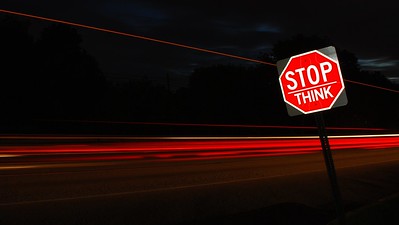
Why is it so important for teachers to complete all the steps to obtain a teaching license?
Teaching as a Profession
According to a study by Kraft and Lyon (2022), the prestige of bring a teacher is at an all time low. This perception may date back to 1975, when a book titled Schoolteacher: A Sociological Study, deemed teaching to be a “semi-profession” (Lortie, 1975). For over 50 years, this label has has impacted how the teaching profession and teachers themselves are perceived in the United States. In this section, we will explore additional issues that are impacting the teaching profession, as identified by Kraft and Lyon (2022).
- Prestige of Teaching: Fifty years ago the public perception of teaching was much more positive than it is today.
- Parent Perceptions: Current survey data shows that less than 37% of parents want their children to become teachers.
- Student Interest: In the early 1970’s, 22 % of freshman expressed interest in becoming a teacher. In 2013, only 5% of freshman want to be teachers.
- Undergraduate and Graduate Degrees: In 2019, one in twelve undergraduate and graduates received degrees in education, in the 1970’s this number was one in four.
- Job Satisfaction: Only 12% of teachers said they were very satisfied with their jobs vs. 62% of teachers in 2008.
As demonstrated by these statistics, the perception of teaching has changed quite a bit over the last 50 years. Many factors have contributed to this shift in how teaching is perceived. Some of those identified by Kraft and Lyon (2022) include: education funding, teacher compensation, changing labor market opportunities, unionization, barriers to entry, working conditional, accountability and autonomy, and school shootings. The impact of the COVID pandemic can also not be underscored.
1.9 An Example in Practice
The following video highlights key impacts of the COVID pandemic on education in the United States. As you watch the video, please consider the following questions:
- In addition to academic issues, what is another key concern shared about the challenges students are facing?
- How many students are experiencing mental health issues post COVID?
- How much less physical activity did children engage in during the pandemic?
- What are some of the long term impacts that are going to affect students as a result of the pandemic?
How Many Hats Does a Teacher Wear?
There is a common misconception that teachers have an “easy” job. In fact, I have heard
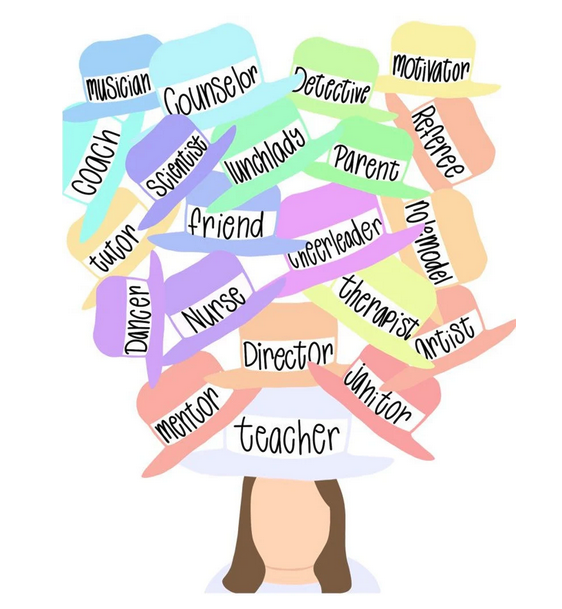
many people say that teachers are so lucky to only have to teach from 8 a.m. – 3 p.m. every day and then have the entire summer off! However, as the following visual demonstrates, a teachers job is not that simple.
Teachers take on many roles when they enter the teaching profession. They do not just teach content from textbooks given to them when they enter the classroom. Rather, they must be masters of the grade-level content they are teaching – above and beyond any textbooks they might be provided.
In addition to the roles identified above, it is essential for teachers to establish meaningful connections with each student.

To do this, teachers need to address the social and emotional (SEL) learning needs of students. According to the CASEL Framework (2023), SEL focuses on helping students gain and apply knowledge, skills, healthy identities, emotional awareness, achievement of personal and collaborative goals, empathy for others, supportive relationships, and make responsible and caring decisions. The following Interactive CASEL wheel shows how they set about meeting these goals.
1.10 A Closer Look
For more information about SEL, please watch the following video or visit the home page at: https://casel.org/fundamentals-of-sel/
Finally, teachers do not get paid for the summer unless they spread out the 190 days of teaching they do get paid for over twelve months instead of nine. Which means they are making less over the nine month period they are actually contracted for during the school year. Therefore, many teachers work additional jobs during the summer and even during the school year because they may not earn enough on an annual teaching salary. Note: teaching salaries vary state by state, and they can be increased based on number of years teaching, specialized certifications, and additional degrees.
Section III: Kansas State University’s College of Education
1.11 Essential Questions
By the end of Section III, the following essential questions will be answered:
- What is the vision of the College of Education at Kansas State University?
- What is the mission of the College of Education at Kansas State University?
- What are the Conceptual Standards of the College of Education at Kansas State University and how do they specifically reflect the content of this course?
In this section, we will explore in more detail how the College of Education (COE) at Kansas State University views education. Let’s start with the College of Educations vision:
“Preparing educators to be knowledgeable, ethical, caring decision makers for a diverse and changing world.”
This vision is carried out through the COE’s mission, which includes:
- the delivery of exemplary instruction to students at the undergraduate and graduate levels;
- production, interpretation, and dissemination of sound and useful research and scholarship;
- leadership, collaboration, and service within the profession; and
- promotion, understanding, and celebration of diversity.
The Conceptual Framework (CF) serves as the guide for fulfilling the colleges vision to preparing educators to be knowledgeable, ethical, caring decision makers for a diverse and changing world. The COE strives to address three major areas in preparing the teachers of tomorrow: general education, content area studies, and professional studies.
The Conceptual Framework organizes 10 standards in professional studies into the following four categories:
- The Learner and Learning
- Content Knowledge
- Instructional Practice
- Professional Responsibility
Below you will see how these standards have been aligned to the specific content of this course.
The Learner and Learning
- Learning Development. The educator demonstrates an understanding of how individuals learn and develop intellectually, socially, and personally and provides learning opportunities that support this development. (COE CF #1, KSDE #2)
- Learning Differences. The educator is flexible and responsive in seeking out and using a variety of strategies to meet the cognitive, physical, emotional, and social needs of all students. (COE CF #2)
- Learning Environment. The educator uses an understanding of individual and group motivation and behavior to create a learning environment that encourages positive social interaction, active engagement in learning, and self-motivation. (COE CF #3, KSDE #5)
Content Knowledge
- Application of Content. The educator is a reflective practitioner who uses an understanding of the historical, philosophical, and social foundations of education to guide his/her educational practices. (COE CF #5, KSDE #13)
Instructional Practice
- Assessment. The educator understands and uses formal and informal assessment strategies to evaluate and ensure the continual intellectual, social, and personal development of all learners. (COE CF #6, KSDE #8)
- Planning for Instruction. The educator understands the role of technology in society and demonstrates skills using instructional tools and technology to gather, analyze, and present information, enhance instructional practices, facilitate professional productivity and communication, and help all students use instructional technology effectively. (COE CF #7, KSDE #12)
- Instructional Strategies. The educator understands and uses a variety of appropriate instructional strategies to encourage and develop various kinds of students’ learning including critical thinking, problem solving, and reading. (COE CF #8, KSDE #4)
Professional Responsibility
- Leadership and Collaboration. The educator fosters collegial relationships with school personnel, parents, and agencies in the larger community to support students’ learning and well being. (COE CF #10, KSDE #10)
Student Learning Outcomes (SLOs) From KSDE #13 Content Standard
- The educator understands how and why the American system of education developed.
- The educator has critical awareness of the norms, philosophies, and values inherent in the American system of education.
- The educator understands how social forces have shaped and continue to shape American education.
- The educator is aware of the ethical standards that should guide the professional teacher’s interaction with all students, colleagues, parents, and members of the community.
- The educator understands how educational policy is formulated and how it affects classroom practices.
- The educator understands legal issues that impact all students, classrooms, teachers, administrators, and parents.
- Students are expected to think reflectively, critically, analytically, and to synthesize the course material as it relates to them personally in the past, present, and as future educators.
Section IV: What will shape your teaching?
1.12 Essential Questions
At the end of Section IV, the following questions should be answered:
- What are the multiple intelligences?
- How did they evolve?
- What are my intelligences?
- Why are they important to know?
- How does knowing my intelligences impact me as a future teacher?
Multiple Intelligences
The theory of multiple intelligences was developed in 1983 by Dr. Howard Gardner, professor of education at Harvard University. It suggests that the traditional notion of intelligence, based on I.Q. testing, is far too limited. Instead, Dr. Gardner proposed eight different intelligences to account for a broader range of human potential in children and adults. These intelligences are:
- Linguistic intelligence (“word smart”)
- Logical-mathematical intelligence (“number/reasoning smart)
- Spatial intelligence (“picture smart”)
- Bodily-Kinesthetic intelligence (“body smart”)
- Musical intelligence (“music smart”)
- Interpersonal intelligence (“people smart”)
- Intrapersonal intelligence (“self smart”)
- Naturalist intelligence (“nature smart”)
Dr. Gardner did not randomly identify these intelligences. He established the following criteria for identification of each unique intelligence:
- It should be seen in relative isolation in prodigies, autistic savants, stroke victims or other exceptional populations. In other words, certain individuals should demonstrate particularly high or low levels of a particular capacity in contrast to other capacities.
- It should have a distinct neural representation—that is, its neural structure and functioning should be distinguishable from that of other major human faculties.
- It should have a distinct developmental trajectory. That is, different intelligences should develop at different rates, and along paths which are distinctive.
- It should have some basis in evolutionary biology. In other words, an intelligence ought to have a previous instantiation in primate or other species and putative survival value.
- It should be susceptible to capture in symbol systems, of the sort used in formal or informal education.
- It should be supported by evidence from psychometric tests of intelligence.
- It should be distinguishable from other intelligences through experimental psychological tasks.
- It should demonstrate a core, information-processing system. That is, there should be identifiable mental processes that handle information related to each intelligence (Gardner 1983; Kornhaber, Fierros, & Veneema, 2004).
2.5 A Closer Look
The following video, by Howard Gardner himself, describes the Multiple Intelligences in more depth. As you watch the video, use the following questions to consider as a guide.
- What are three insights you gained from watching this video on Multiple Intelligences?
- What are two benefits of using Multiple Intelligences in classrooms?
- Did any of my previous teachers use Multiple Intelligences when planning/delivering class- room instruction?
- What is one question I still have about the Multiple Intelligences?
Take a moment to respond to the questions you were asked to think about before watching the video. Based on your responses, how has your knowledge of the multiple intelligences grown? How might your apply this information as a future teacher?
The importance of multiple intelligences
According to research by Dr. Gardner (Gardner, 1983), our schools and culture focus most of their attention on linguistic and logical-mathematical intelligence. We esteem the highly articulate or logical people of our culture. However, we should also value individuals who have gifts in the other intelligences: the artists, architects, musicians, naturalists, designers, dancers, therapists, entrepreneurs, and others who enrich the world in which we live.
Unfortunately, many children who have these gifts do not receive reinforcement for them in school. In fact, many of these kids, end up being labeled “learning disabled,” “ADD” (attention deficit disorder), or simply underachievers, when their unique ways of thinking and learning aren’t addressed by a heavily linguistic or logical-mathematical classroom. The theory of multiple intelligences proposes a major transformation in the way our schools are run. It suggests that teachers be trained to present their lessons in a wide variety of ways using music, cooperative learning, art activities, role play, multimedia, field trips, inner reflection, and much more.
This is what makes the theory of multiple intelligences so important! For it has grabbed the attention of educators around the country, and hundreds of schools are currently using its philosophy to redesign the way it educates children. Unfortunately, there are still thousands of schools still out there that teach the same old way, through dry lectures, boring worksheets and textbooks. The challenge is to get this information out to many more teachers, school administrators, and others who work with children, so that each child has the opportunity to learn in ways that are harmonious with their mind.
The theory of multiple intelligences also has strong implications for adult learning and development. Many adults find themselves in jobs that do not make optimal use of their most highly developed intelligences (for example, the highly bodily-kinesthetic individual who is stuck in a linguistic or logical desk-job when he or she would be much happier in a job where they could move around, such as a recreational leader, a forest ranger, or physical therapist). The theory of multiple intelligences gives adults a whole new way to look at their lives.
What are my intelligences?
One of the most remarkable features of the theory of multiple intelligences is how it provides eight different potential pathways to learning. If a teacher is having difficulty reaching a student in the more traditional linguistic or logical ways of instruction, the theory of multiple intelligences suggests several other ways in which the material might be presented to facilitate effective learning. Whether you are a kindergarten teacher, a graduate school instructor, or an adult learner seeking better ways of pursuing self-study on any subject of interest, the same basic guidelines apply. Whatever you are teaching or learning, see how you might best connect with it:

- Words (linguistic intelligence)
- Numbers or logic (logical-mathematical intelligence)
- Pictures (spatial intelligence)
- Music (musical intelligence)
- Self-reflection (intrapersonal intelligence)
- Physical experience (bodily-kinesthetic intelligence)
- Social experience (interpersonal intelligence), and/or
- Experience in the natural world. (naturalist intelligence)
2.6 A Closer Look
So the question now is, what type of intelligence are you? To find out the answer to this question, you are going to take a brief survey. Before taking the survey, write down the three intelligences you think you use most as a learner (rank them in order from strongest to weakest).
Now, take the Multiple Intelligences Survey located at the following link: http://literacyworks.org/mi/assessment/findyourstrengths.html
- What did you discover?
- Were the three intelligences you thought you used most as learner the ones actually identified as your top three on the survey?
- What implications can you draw from your results?
- Why do you think it is so important to know what your intelligences are as a learner?
- How might this affect you as a future teacher?
Professional implications
The theory of multiple intelligences is so intriguing because it expands our horizon of available teaching/learning tools beyond the conventional linguistic and logical methods used in most schools (e.g. lecture, textbooks, writing assignments, formulas, etc.). One research study done by a third grade teacher, Bruce Campbell (1991), found the following positive outcomes as a result of creating and implementing a multiple intelligences classroom:
- The students displayed increased independence, responsibility and self direction over the course of the year.
- Students previously identified as having behavioral problems made significant improvement in their behavior.
- Cooperative skills improved in all students.
- Ability to work multimodally in student presentations increased throughout the school year with students using a minimum of three to five intelligence areas in their classroom reports.
- The more kinesthetic students particularly benefited from the active process of moving from center to center every fifteen to twenty minutes.
- Leadership skills emerged in most students. Several students who had not previously displayed leadership abilities took the lead with their groups in the Music Center, the Building Center, the Art Center and particularly in the Working Together Center.
- Parents reported frequently that behavior improved at home, more positive attitudes about school were exhibited, and attendance was increased.
- Daily work with music and movement in content areas helped students retain information. At the end of the year, all students were able to remember several songs created as early as September which contained specific academic information.
- The role of the teacher changed as the year progressed, becoming less directive and more facilitative, more diversified, less of a taskmaster and more of a resource person and guide.
- Students become progressively more skilled at working effectively in this unique and non-traditional classroom format.
Do you think you would find similar outcomes to Mr. Campbell if you created and implemented a Multiple Intelligence classroom? Why or why not?
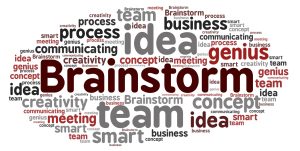
“Individually brainstorms additional benefits you see in implementing multiple intelligences in the classroom. Think about the specific grade level(s) you plan on working with as you brain storm your list. Write down at least three specific benefits on a separate sheet of paper.
References
Campbell, B. (1991). Multiple Intelligences in the Classroom. Context Institute. https://www.context.org/iclib/ic27/campbell/
Gardner, H. (1983). Frames of mind: The theory of multiple intelligences. Basic Books.
Gosnell, N. (2023). Chicken BBQ fundraiser coming up Saturday. Hutch Post. Posted April 30, 2023.
Hicks, D. (2022, November 15). Kansas parents explain the homeschooling surge. The Sentinel. https://sentinelksmo.org/kansas-parents-explain-the-homeschooling-surge/.
Kansas State Department of Education. (2023). Kansas Education Preparation Provider Accreditation and Program Standards. https://www.ksde.gov/Agency/Division-of-Learning-Services/Teacher-Licensure-TL/Licensure-Regulations-and-Standards.
Kornhaber, M., Fierros, E., & Veenema, S. (2004). Multiple intelligences: best ideas from research and practice. Pearson.
Kraft, M. A. & Lyon, M.A. (2022). “The Rise and Fall of the Teaching Profession: Prestige, Interest, Preparation, and Satisfaction over the Last Half Century,” Annenberg Institute at Brown University.
National Center for Education Statistics. (2023). Racial/Ethnic Enrollment in Public Schools. Condition of Education. U.S. Department of Education, Institute of Education Sciences. https://nces.ed.gov/programs/coe/indicator/cge.
Riser-Kositsky, M. (2019, January 3). Education Statistics: Facts about American schools. Education Week. https://www.edweek.org/leadership/education-statistics-facts-about-american-schools/2019/01.
USAHello. (2024, September 8). Public school in the USA: A guide for immigrant parents. USAHello. https://usahello.org/education/children/public-school/#gref.
